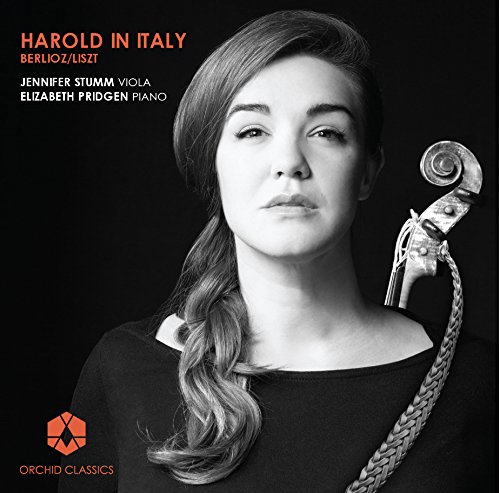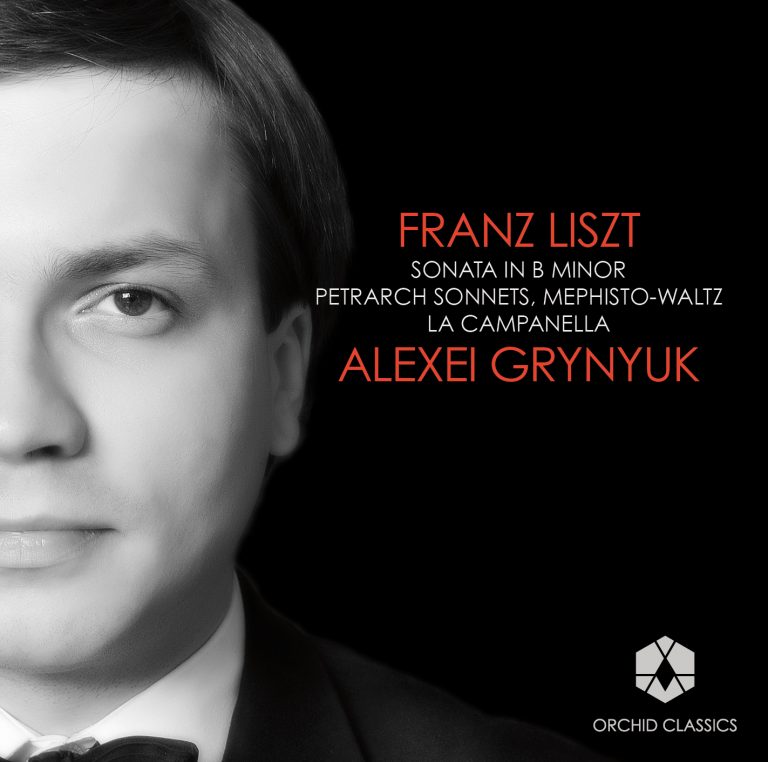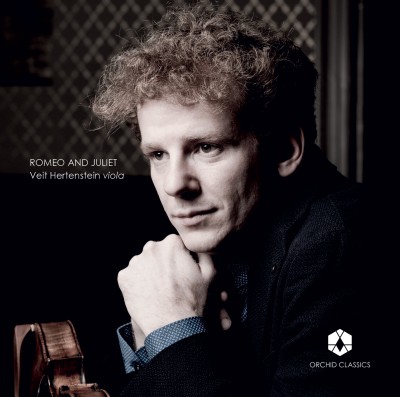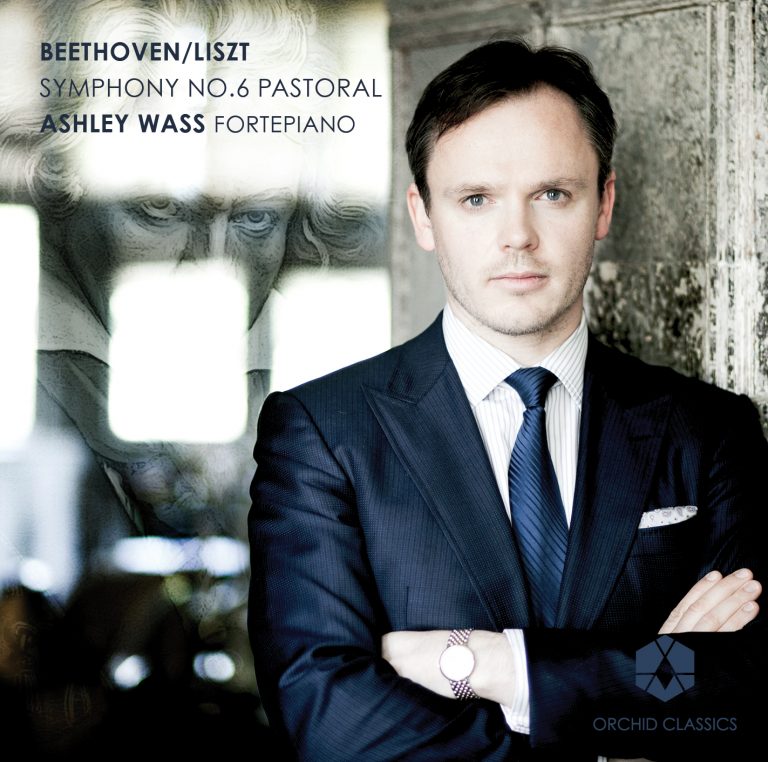Artist Led, Creatively Driven

Harold in Italy, Berlioz/Liszt
Jennifer Stumm
Elizabeth Pridgen
Release Date: September 2014
ORC100044
HAROLD IN ITALY
Prologue: Questions
1 Franz Liszt (1811-1886)
“Nuages Gris”, S199 arranged for viola and piano 2:24
Andante
I: The Climb
2 Hector Berlioz (1803-1869) arr. Liszt
Harold in Italy, Op.16/S472 (1834/1836) 16:10
Harold in the mountains. Scenes of melancholy, happiness and joy
Adagio – Allegro
II: Memories
3 Franz Liszt: Romance Oubliée, S132 for viola and piano 3:33
Andante malinconico
4 Harold in Italy 7:40
March of pilgrims singing the evening prayer
Allegretto
III: Dreams
5 Harold in Italy 6:25
Abruzzian mountain-dweller’s serenade to his mistress
Allegro assai – Allegretto
6 Franz Liszt: Oh! quand je dors, S282 arranged for viola and piano 4:19
Andante
IV: Answers
7 Harold in Italy 14:02
Orgy of the brigands. Reminiscences of earlier scenes
Allegro frenetico – Adagio – Allegro – Tempo I
Epilogue: Unanswered Questions
8 Franz Liszt: Schlaflos! Frage und Antwort, S203 arranged for viola and piano 2:22
Schnell und leidenschaftlich
Total time 57:43
JENNIFER STUMM viola
ELIZABETH PRIDGEN piano
WANDERER, DREAMER, REVOLUTIONARY
The viola is the character actor of instruments, a musical chameleon; its range most closely mimics the spectrum of the human voice. What better choice of instrument, then, to play the part of Harold. Questions burned in him. From a restless generation in a time of ideals, he was full but never satiated. He craved deeper structure and meaning from life, often suspended between the ecstatic thrill of exploration and throes of deep melancholy. The world swirled around him at speed. He drank it in. He left what he knew. Harold is the reflection of anyone who has stepped out into the world unsure of what might be returned to them, who has questioned the rules, searched for home, for love, for answers.
REDEFINING “SOLOIST” (WHO DO YOU THINK YOU ARE?)
Hector Berlioz, ever the musical mad scientist, combined two old ideas and invented a new world of dramatic possibilities: “a series of four orchestral scenes in which the solo viola would be involved, to a greater or lesser extent, like an actual person, retaining the same character throughout.” He assigned a face to an instrument. Berlioz composed Harold in Italy for the greatest virtuoso of his age, or perhaps any age, Niccoló Paganini. Paganini had loved Berlioz’s landmark Symphonie Fantastique and requested a piece to showcase his new Stradivarius viola (Paganini astonishingly owned a whole quartet of Strads, the astronomical value of which today would foil even the wealthiest classical musician!). Berlioz responded with a piece that was a fusion of symphony and concerto, true to his tendency to break rules of form in favour of dramatic innovation. Upon seeing an early sketch, Paganini scoffed, “That’s no good. There’s not enough for me to do here. I should be playing all the time.” “What you want is a viola concerto,” Berlioz replied, “and in this case only you can write it!” The virtuoso never played the piece but ate his words several years later when, upon hearing Harold he wrote to Berlioz that “Beethoven being dead, only Berlioz can make him live again,” accompanied by a cheque for a hefty sum.
“INDEFATIGABLE VAGABOND!”
It was the era of Romantic travel, ideals, and global instability. Riding the wild popular success around Lord Byron’s epic poem Childe Harold (clever businessman!) and even more perhaps influenced by his own life and travels in Italy, Berlioz cast his soloist as a wandering dreamer and seeker of his time. Winning the Prix de Rome in 1830, Berlioz spent two years in Italy which left an indelible imprint. Hugh Macdonald writes, “In Italy Berlioz came face to face with experiences he had previously only read about or idealized. Byronism, so fashionable at that time, became reality as he encountered brigands, corsairs, revolutionaries, lazzaroni [rogues] and pifferari [bagpipers] and he sampled the harshness of a storm at sea or the Carnival in Rome or sleeping in the open air in the mountains.”
Around the same time, in the wake of the French July Revolution of 1830, Berlioz met Liszt. Franz Liszt, himself a virtuoso phenomenon, relentless traveller and Romantic idealist, loved Berlioz’s music and the pair became compatriots, in life, music and in letters. “Indefatigable vagabond!” wrote Berlioz to Liszt in 1839 as the pianist set a new standard for the travelling musician, scarcely taking a pause. Liszt was deeply affected by Berlioz’s radical experimentation with form, ensemble size, timbre, volume, and instrumentation (“Thank God I had enough sense to grasp at the outset the significance of your genius.”). Indeed, he was so fond of Harold in Italy that he wrote not one but two transcriptions which he began in 1836. Liszt’s transcription of the work for viola and piano adds yet another layer to the musical and textual cross-fertilization represented in the original. The precision and brightness of the piano, its transparency of texture, offer a special degree of flexibility and dramatic opportunity. Thus, here we treat Harold in Italy like an oratorio, with brief recitatives by Franz Liszt.
Prologue: QUESTIONS
Like a bank of fog, it is unclear where Nuages Gris (Gray Clouds) begins and where it ends. Liszt wrote the piece for piano late in his life and in the ambiguous motive of the opening, underpinned by threatening tremolando, you almost feel the sense of walking blindly, hands outstretched. This is musical wandering, lacking tonal direction, adrift as the viola slips away to its very highest reaches, as though Liszt himself has become the wandering traveller uncertain of what the future holds.
I: THE CLIMB: Harold in the mountains. Scenes of melancholy, happiness and joy As outlines of mountains emerge into view through clouds, so begins Harold in Italy. This opening music is always tensely ascendant, calloused hand above hand on the twisting rope of a chromatic fugue with surely a hint of Bach’s St Matthew Passion in it. At last, in a grand flourish we reach a plateau and in a shift from G minor to major, sunlight breaks through the clouds and we meet our work’s namesake. As in Symphonie Fantastique, Harold in Italy incorporates a musical motto that recurs throughout, but unlike the idée fixe of the Symphonie, which manically “keeps obtruding like an obsessive idea on scenes that are alien to it and deflects the current of the music,” Harold’s famous theme maintains its identity throughout the work. It’s a simple tune, dreamy and almost innocent. Throughout the piece we will hear it sung, hummed, whistled, onstage and off. Eventually these musings lead to a happy Allegro, introduced by the stuttering viola that was famously mocked in a Paris review after the work’s premiere (it was titled “Ha! ha! ha! – haro! haro! Harold!” Critics were so much tougher back then). The Alps unfold around him and the skies (and music) open wide, the movement ending with a sense of the unfettered joys of independence and nature.
Interlude I: MEMORIES
One of his few pieces for viola, Liszt dedicated the beautiful Romance Oubliée (Forgotten Romance) to Hermann Ritter, violist who developed a design for the viola alta — three to five inches longer than a typical viola — which allowed for the possibility of new timbres and sonorities (the instrument never caught on, probably because anyone who tried it injured their arms!). Inspired by the unique sonorities of that viola, Liszt modelled the work on a Russian song from the 1840s, “Oh pourquoi donc.” The main theme creates a singular harmonic ambiguity, vacillating between major and minor, perhaps a metaphor for memory and reality. The doleful music of the opening emerges passionately, the memory springing to life, only to dissolve back into a sea of diffuse viola arpeggios, a direct nod to the second movement of Harold in Italy. Liszt even goes on to quote the work directly in his final phrase.
II: RESONANCES: March of pilgrims singing the evening prayer Church bells ring out across a mountain valley in the stillness of dusk; a group of singing pilgrims approaches, passes by and disappears. The March of the Pilgrims is a beautiful arc, both musically and dramatically, a slow, masterfully controlled crescendo and decrescendo. The music is stunningly evocative and original, so much so the movement was repeated by demand at its premiere in Paris. As the pilgrims come into view Harold sings his song, interweaving with the chorale above a walking bass. It’s as if he considers their devotion, even longs to know what it is to be a part, but ultimately remains where he is, the solitary observer. As the procession departs and the light wanes, the long series of viola arpeggios played ponticello (on the bridge) shows just how good Berlioz is at painting colour with music. The scene closes with more tolling bells and the slowing of time, the pilgrims trudging ever farther into the distance until finally the only sound left is a single note of the viola.
Interlude 2: DREAMS
Oh! Quand Je Dors (Oh! When I Sleep) with its soaring expressive lines, might be the definition of Liszt the songwriter. On a text of Victor Hugo, each of the three stanzas ends with an exclamation mark, more ecstatic than the last, the narrator bidding his lover to come near. Unresolved suspensions and large leaps create a sense of deep longing in the melody. This is the shimmering dream of the wanderer — to be saved by love from solitary life and inner conflict, brought from the sidelines into the dance, no longer observer but protagonist. “On my glum face, where perhaps a dark dream has rested for too long a time, let your gaze lift it like a star… at once my dream will be radiant!” The text, though, is always written in the conditional. Amidst all this passion lurks an underlying sense of resigned fate. The song but a beautiful dream.
III: THE VOYEUR: Abruzzian mountain-dweller’s serenade to his mistress He leaves his mountain solitude and wanders into a happy rustic village celebration, all jaunty rhythms and strolling, droning bagpipes (played by the viola!). Amidst the whirl and crowd, he sees a beautiful face. She looks at him. He looks back. And realizes she’s looking at someone else. He is but a voyeur. A mountain man sings to his beautiful beloved. Around the serenade Harold winds his song but this time eventually overtakes it, stepping forward from his observer’s shadow and passionately expressing himself. In the miraculous second half of this movement we hear him rejoin the party but now the village sings his music and he sings the tune of the mountaineer. Did he get the girl? I like to think so.
IV: TRAVELLING SOUL: Orgy of the brigands. Reminiscences of earlier scenes “Wine, blood, joy, and rage mingle in mutual intoxication and make music together, and the rhythm seems now to stumble, now to rush furiously forward, and the mouths of the brass to spew forth curses, answering prayers with blasphemy, and [the brigands] laugh and swill and strike, smash, kill, rape, and generally enjoy themselves.” Berlioz With a bang, the brigands enter the scene! The sprawling final movement shows off some of Berlioz’s most witty and ingenious writing. While violists are sometimes critical of this movement, which offers the soloist rather little stage time, dramatically it is crucial to the story. As in Beethoven’s Ninth, themes of three preceding movements each make a brief appearance amidst the melée, with long swaths of uproarious music in between. It is as if Harold truly is wandering in and out of the action and, unlike the previous movements, this time plays philosopher as opposed to voyeur. In a few short sentences, he sums up his journey, makes his peace and, unbound, slips away from the revelry toward adventures new. This is the crux, in the words of Berlioz. “To be free in mind, spirit, soul, and everything. To be free not to act, even not to think. To be free to forget time, to despise ambition, to mock glory, not to believe in love any more. To be free to go north, south, east, or west, to sleep in an open field, to live off very little, to wander without aim, to dream, to lie down and drowse for days on end…True freedom, absolute and immense!”
Epilogue: ANSWERS
Schlaflos! Frage und Antwort (Sleep! Question and Answer) begins as a harmonic question atop a churning arpeggio sea. Growing ever more turbulent, the music boils until it abruptly reaches its breaking point. Liszt’s “answer” is really more a question reframed: the same music but now in a crystalline major key. The storm subsided, at the last the viola sings alone, drifting back into the clouds of Nuages Gris, on a note of uncertainty but this time without fear. The answer is in the question.
“The end of all our exploring will be to arrive where we started And know the place for the first time.” T.S. Eliot Little Gidding
© Jennifer Stumm 2014
Violist JENNIFER STUMM is recognized as one of the world’s leading advocates for her instrument, known both for her distinctive sound and unbridled enthusiasm for music. Hailed by the Washington Post for the “opal-like beauty” of her playing, Stumm has appeared on many of the world’s great stages, including Carnegie Hall, the Kennedy Center, the Concertgebouw, Sala São Paulo, and Wigmore Hall. Her solo career was launched after winning three major international competitions: William Primrose, Geneva, and Concert Artists Guild (where she was the first violist ever to win First Prize). A BBC New Generation artist and Borletti Buitoni Award recipient, she performs chamber music at major festivals such as Marlboro, Spoleto, Aldeburgh and IMS Prussia Cove. She has made Harold in Italy a special calling card, performing it across the world, both with orchestra and in her unique staged version of Liszt’s arrangement with piano.
An enthusiastic public speaker, Jennifer Stumm’s TEDx talk about the viola and the blessings of being different, “The Imperfect Instrument,” was named an editor’s pick of all talks on ted.com. She was cover artist of Symphony magazine’s “Artist on the Verge” edition. Native of Atlanta, Georgia, Jennifer chose the viola in her school’s orchestra when she was eight because she thought it had the most beautiful sound (and that the cello was hard to carry!). She went on to study with Karen Tuttle at the Curtis Institute of Music and at the Juilliard School and also pursued interests in politics and astronomy at the University of Pennsylvania. Her later mentors were Nobuko Imai and Steven Isserlis. Devoted to the power of musical education to create social change, in 2014 she is artist in residence at the EMESP Tom Jobim in Sao Paulo where she will direct a new ensemble of Brazil’s best young musicians. She is currently International Chair of Viola at the Royal College of Music, London.
On this recording Jennifer plays a beautiful and rare Maggini contralto viola c.1600, courtesy of Jonathan Moulds.
Pianist ELIZABETH PRIDGEN has distinguished herself as a soloist and chamber musician and has appeared in concerts at Carnegie Hall’s Zankel Hall, Merkin Hall, the Tilles Center on Long Island, Spivey Hall in Atlanta, and the “Rising Stars Series” at the Ravinia Festival. Ms. Pridgen has also performed at Alice Tully Hall, Carnegie Hall’s Weill Recital Hall, and the Kosciuszko Foundation, and in recitals in London, Amsterdam, Rotterdam, Washington D.C., Miami, San Francisco, and throughout the United States and Caribbean. Ms. Pridgen performs regularly at festivals including the Rome Chamber Music Festival in Italy, the Strings Music Festival in Steamboat Springs, Colorado, the Amelia Island Chamber Music Festival, the River To River Festival, the Highlands-Cashiers Chamber Music Festival, the Water Island Music Festival, and the Madison Chamber Music Festival. An avid chamber performer, she has collaborated with artists such as Elmar Oliveira, Robert McDuffie, Lynn Harrell, Hilary Hahn, Sarah Chang, Anne Akiko Meyers, Jennifer Koh, Mark O’Connor, the Diaz String Trio, Cuarteto Latinoamericano, and the American String Quartet. She also performs regularly with violinist Amy Schwartz Moretti and cellist Julie Albers as a member of the Cortona Trio and with the Georgian Chamber Players. Ms. Pridgen is currently a Distinguished Artist and Piano Chair at the McDuffie Center for Strings and holds the G. Leslie Fabian Piano Chair at the Townsend School of Music at Mercer University. She received her Master of Music degree at the Juilliard School where she studied with Joseph Kalichstein and earned her bachelor’s degree at the Peabody Conservatory of Music as a student of Ann Schein.
“Jennifer Stumm’s playing is remarkably refined, yet with a wide expressive range” (Gramophone Magazine)










